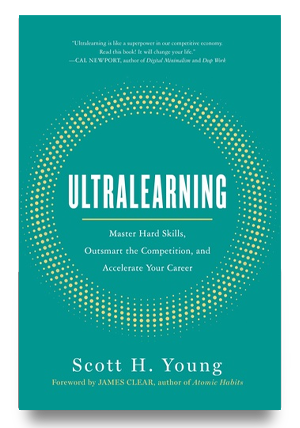I’ve long argued that good analogies are a key to learning well. Abstract subjects like math, science and philosophy are difficult to learn because they aren’t anchored to anything in our experience. Analogies moor these ideas adrift.
But analogies are also hard to construct. They’re a creative act, so there’s no step-by-step which will produce them reliably. Their formation also depends on the very insight they are trying to generate. Therefore, a good analogy can be impossible to make when it is needed most.
I want to share my thoughts on what makes an analogy good, as a learning tool. Then, I’d like to share some tricks I’ve found to make them.
What Makes an Analogy Good?
A good analogy is a compromise between two conflicting goals: familiarity and representativeness.
Good analogies are familiar. They express an abstract idea in terms of a familiar one. The odometer and speedometer on a car are a good analogy for a function and its derivative, because we all understand how speedometers work, but maybe not calculus.
Concrete experiences are good breeding grounds for analogies because they can be appreciated by anyone. When I say voltage is to the electric force what height is to the gravitational force, that is helpful because height is more concrete than electric potential.
But a good analogy doesn’t need to be concrete, it only needs to be expressed in terms of an idea you already know deeply. One of my favorites was from an MIT ecology class which expressed the idea of biological niche as a section of an n-dimensional feature space. If you didn’t study linear algebra, that may not make any sense, but it was widely appreciated by the audience who had a stronger math background.
That latter fact is important when creating analogies for yourself. Concreteness is good, but as long as you understand the analogous domain well, anything works.
Good analogies are also representative. They match at least some of the features of the idea you’re trying to explain. More matches means the analogy has more intuitive power. Fewer means you need to be careful about applying the analogy to understand new situations.
Making new analogies is like making a key for a lock you haven’t seen before. You’re limited by your past experience as to what kind of keys you can make. New key designs take a lot longer to learn than borrowing old ones. That’s familiarity.
But you also want the key to fit the lock. If the key shape deviates too much, it won’t open the lock. That’s representativeness.
How to Think of Good Analogies
Good analogies are like inventions. You can learn some rules to help dream them up, but ultimately it’s a creative act and can’t be fully controlled.
Like inventions, the best analogies aren’t invented wholesale, but built upon the work of others. When you’re learning something abstract, first try to look for other analogies people have generated.
If you can’t find one, you’ll have to make one. That process can be daunting, but there are a few steps to make it easier:
1. Gather examples
Examples are easier than making imaginative analogies which hop domains. In some areas, they may even be better. I always found economics and philosophy to be more amenable to examples than more cosmopolitan analogies which travel beyond their native subject.
Sometimes the analogy is an example. Speedometers aren’t just an analogy of derivatives, that’s what they actually are! Nothing will be more representative of an idea than an example of the idea itself.
Even if you desire a more creative hook to hang your thoughts, examples become a gateway to more imaginative understandings.
2. Pick fertile ground
My next step, if I want to force an analogy out of a concept, is to look for a setting where I might be able to generate one. There are some grounds which are more fertile for harvesting analogies than others. Here are some of my favorites:
- Children playing. The rules of games children play can be very flexible to fit many different patterns and the games themselves are easy to imagine. I once used this to remember the Cournot competition model by imagining a game where children had balloons which they could steal from each other to get more, but doing so would also pop some of them.
- Soap-opera drama. Affairs, romance and class systems are also good fertilizer for analogies. Imagining the periodic table of elements as a town where the inhabitants have different personalities—an affluent class of noble gases, coercive halogens and gullible alkali metals.
- Simple physical systems. Unusual systems can be described using more familiar physical ones. Electric circuits are a system of pipes with bottlenecks (resistors), pumps (batteries), water flow (current) and different heights (voltage).
The key is to start with a fertile domain and then start matching features. For the Cournot competition model, I started with children playing, then added:
- They need to be competing over something. Let’s make it toys.
- They need to be able to act selfishly. They can steal the toys too.
- They need to reduce the total when they act selfishly. Switch toys to balloons, now some pop when there’s stealing.
3. Compare and contrast.
No analogy is perfectly representative, unless it is actually the idea itself. Even examples fail to generalize perfectly, which is why we have abstractions in the first place. A speedometer may be a derivative, but it doesn’t go negative when you change directions.
One way around this is to examine the metaphor more closely. Where does it match the idea? Where does it not? Just doing this exercise will improve your understanding, even if you don’t modify your analogy as a result.
My last example used balloons and children to explain an economics model. But some features of the model are hard to force into this analogy. The model says that firms make their decisions in advance, that doesn’t correspond well to children playing. In the model, nobody is stealing, rather it’s their decision to produce more which increases supply and reduces prices for everyone. In my analogy, children are presumably stealing from a specific person, not a general pool.
Going meta, keys and locks are an analogy of analogies and ideas. Keys have features which attempt to match the features of the lock (similarity). But a lock either opens completely or not at all, whereas an analogy can give a partial explanation for some parts and not others (difference).
An Appreciation for Good Analogies
I appreciate good analogies like art or inventions. An analogy compromises between familiarity and representativeness, with good analogies choosing just the right amount for the context.
The best analogies not only explain, they inspire. They pour color into a featureless void and breathe life into something static. They make the entire subject they cover more beautiful and interesting. Good analogies aren’t just tools, they’re art.


 I'm a Wall Street Journal bestselling author, podcast host, computer programmer and an avid reader. Since 2006, I've published weekly essays on this website to help people like you learn and think better. My work has been featured in The New York Times, BBC, TEDx, Pocket, Business Insider and more. I don't promise I have all the answers, just a place to start.
I'm a Wall Street Journal bestselling author, podcast host, computer programmer and an avid reader. Since 2006, I've published weekly essays on this website to help people like you learn and think better. My work has been featured in The New York Times, BBC, TEDx, Pocket, Business Insider and more. I don't promise I have all the answers, just a place to start.